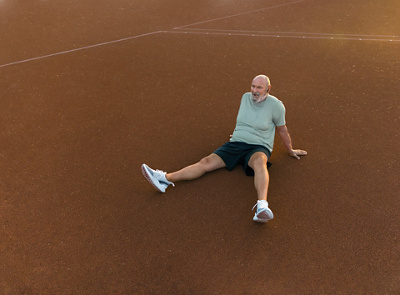Varicose veins (also known as varices) occur as a result of blood congesting in the superficial leg veins. Defective venous valves are responsible for this congestion. When venous valves are working properly, they prevent the blood from flowing back into the leg veins, but varicose veins impair this mechanism. Support stockings are used to treat and prevent varicose veins. People affected by this condition can also consider various treatment options involving surgery.

Causes of varicose veins
The blood must be redirected back into the heart against gravity. Two mechanisms ensure that this also happens. On the one hand, flexing the leg muscles works like a pump on the veins. On the other hand, the valves in the veins (venous valves) prevent the blood from flowing backwards. If these valves are defective and no longer close, the blood flows backwards and congests in the veins. This is known as venous insufficiency or varicosis. As a result, the typical spider veins appear in the small veins, while varicose veins can form in the larger veins.
Frequently, a familial predisposition for connective tissue weakness is the main reason why varicose veins develop. Women are affected by it more frequently than men.
The following factors can also facilitate the development of varicose veins:
- Lack of exercise
- Standing or sitting for lengthy periods
- Excessive weight
- Smoking
- Pregnancy
What are the symptoms?
Varicose veins are not difficult to recognise as extended, snake-like and congested veins under the skin. If only small veins are affected, this causes the typical picture of blue mesh which is called spider veins. Varicose veins are common; however, they are not just a cosmetic problem. They can also manifest themselves as heavy, tired legs which ache and feel sore.
Sometimes chronic congestion can also cause swelling in the legs with skin changes through to skin ulcers. Other symptoms may include a build-up of fluid (oedema). This can occur when pressure causes veins to become permeable, thus allowing fluid to pass into the tissues. In an advanced stage of the disease, the skin is no longer supplied with sufficient oxygen. This interferes with the healing process, impairing wound healing. Patients may then develop open wounds on the legs, known as venous ulcers. However, varicose veins also increase the risk of venous inflammation (phlebitis). In this context, deep vein thrombosis can sometimes occur.
Diagnosis of varicose veins
Varicose veins are already easy to recognise externally. Medical diagnosis makes it possible to pinpoint which areas of the leg are affected by varices, and to what extent. With further examinations such as an ultrasound or x-ray of the legs with contrast agent (phlebography), the function of the veins can thus be precisely clarified before any surgery.
Treatment
A wide range of treatment options are available and should be selected depending on the stage of the disease. Besides measures designed to alleviate the condition such as sport or the use of compression stockings, varicose veins can also be removed by a doctor. Various surgical options are available for treating varicose veins, such as vein stripping or cauterisation. You can find out more about these procedures in the Varicose vein operations section.
Prevention
People who are susceptible to diseases of the leg veins should wear support stockings as a preventative measure. In addition, they should avoid activity which requires them to stand for extended periods of time. Regular physical exercise is also recommended. This not only strengthens the muscles but also improves the blood circulation, which is a key factor for successfully preventing the condition.
Centres 4
-
Outpatient Clinic Permanence
Bümplizstrasse 83
3018 Bern -
Vascular Surgery Lucerne LUVAS
Montag bis Donnerstag
08.00 - 12.00 Uhr und 13.00 - 17.00 Uhr
Freitag
08.00 - 12.00 Uhr, anschl. geschlossen

